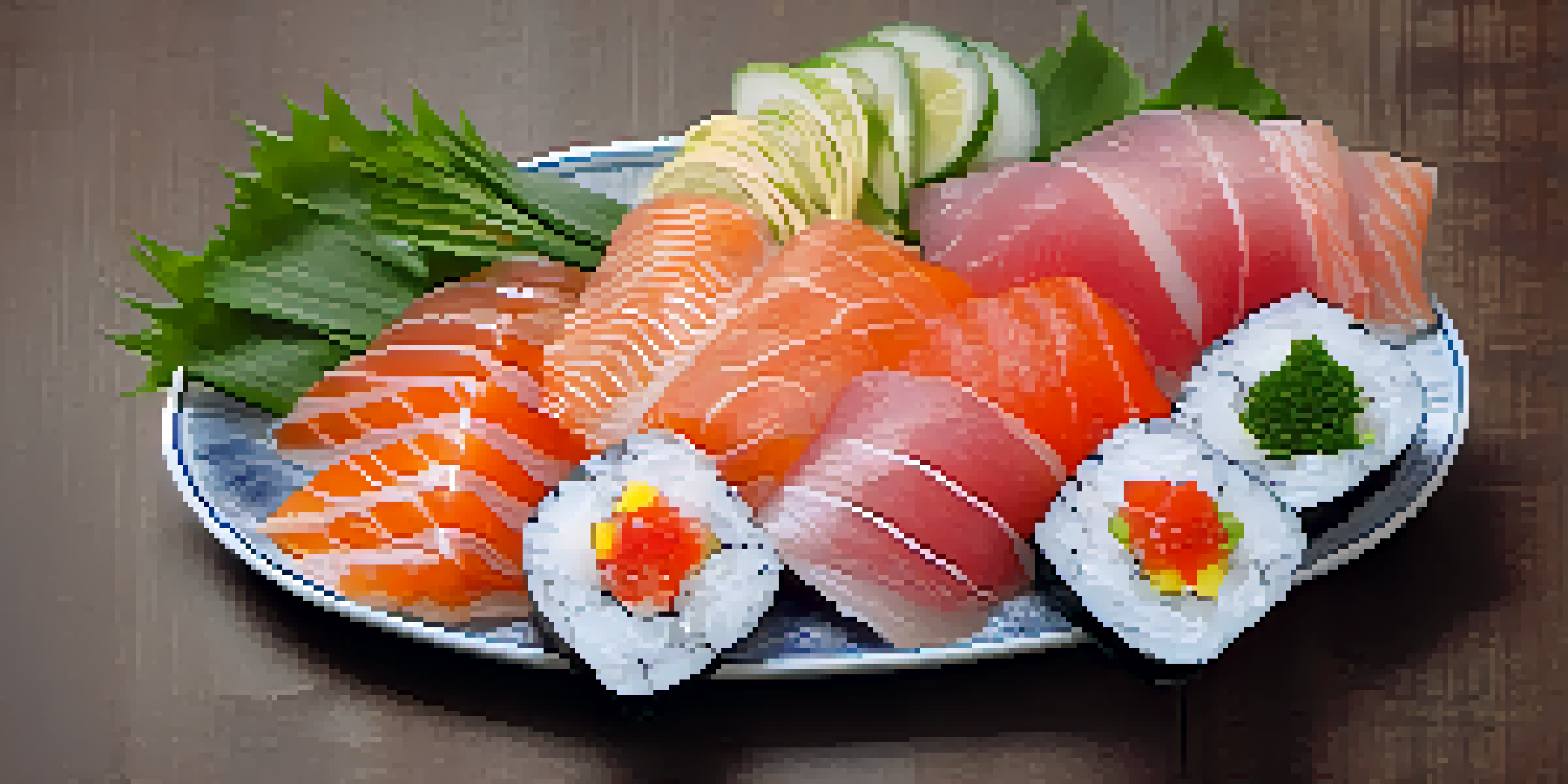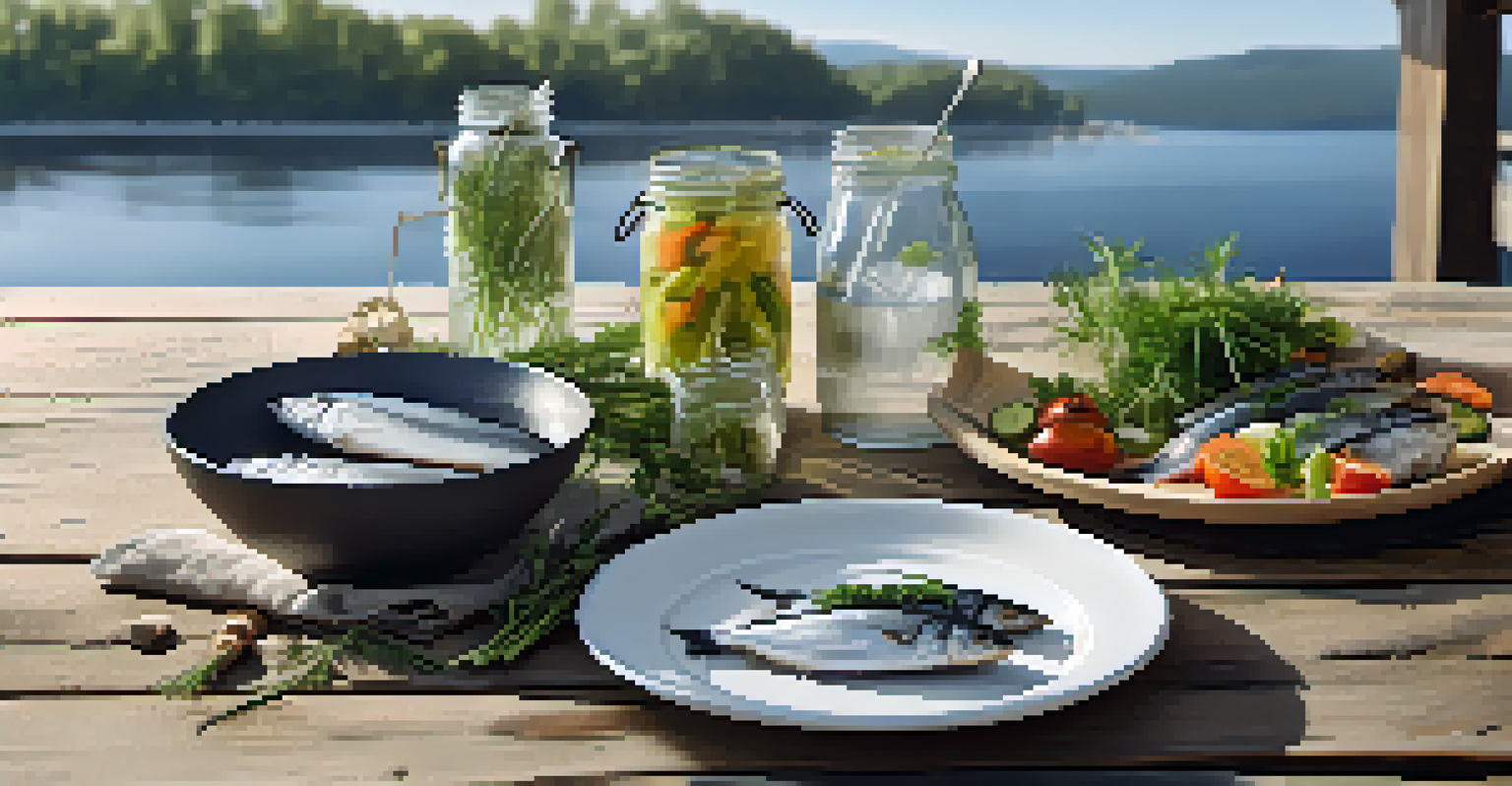Cultural Perspectives of Raw Omnivorism: Traditions Explored

Understanding Raw Omnivorism: A Cultural Overview
Raw omnivorism, the practice of consuming uncooked animal products, is more than just a dietary choice; it's deeply rooted in cultural traditions worldwide. From the Inuit in the Arctic to various indigenous tribes, this approach has been shaped by environmental factors, available resources, and historical practices. It’s fascinating to see how different cultures embrace this raw diet as a way to connect with their ancestry and the land.
Food is our common ground, a universal experience.
In many societies, raw omnivorism is not only about nutrition but also about preserving ancient customs. For instance, in Japan, dishes like sashimi are celebrated for their freshness and flavor, reflecting a cultural appreciation for the natural state of food. This practice ties together community, heritage, and respect for the ingredients, highlighting the significance of raw food in social settings.
Moreover, raw omnivorism often intersects with spirituality and rituals. Many cultures view the consumption of raw food as a way to honor the animals that provide sustenance. This perspective underscores a profound respect for life and nature, showcasing how dietary practices can embody deeper values and beliefs.
Historical Roots of Raw Omnivorism in Different Cultures
The historical roots of raw omnivorism can be traced back thousands of years when cooking was not an option due to various circumstances. Early humans relied on raw meat, fish, and plants as primary food sources, which shaped their survival strategies. This practice laid the foundation for many cultural traditions that continue today, reflecting a time when raw consumption was essential for sustenance.

For example, in Scandinavian countries, the practice of eating raw fish, such as herring, has been part of culinary traditions for centuries. The preservation methods employed, like fermentation and curing, showcase the ingenuity of these cultures in maximizing resources without cooking. This historical context reveals how necessity can evolve into cherished traditions over time.
Cultural Significance of Raw Omnivorism
Raw omnivorism connects diverse cultures to their heritage and traditions through the consumption of uncooked animal products.
Additionally, indigenous cultures around the globe have maintained their raw food practices through oral histories and community teachings. These traditions often involve specific rituals, such as hunting and gathering, which emphasize a deep connection to the land and its offerings. Understanding these historical backgrounds enriches our appreciation for the complex tapestry of raw omnivorism.
Raw Omnivorism and Environmental Adaptation
The practice of raw omnivorism often showcases the remarkable adaptability of cultures to their environments. In regions where cooking facilities are scarce or where food preservation is challenging, consuming raw foods becomes a practical solution. For instance, in coastal communities, eating freshly caught seafood raw is not only a dietary choice but also a necessity for maximizing freshness and flavor.
You are what you eat, so don't be fast, cheap, easy, or fake.
Moreover, raw omnivorism can be viewed as a sustainable practice, particularly in areas where resources are limited. By consuming food in its natural state, communities can reduce the energy expenditure associated with cooking and preserve the nutritional integrity of their meals. This approach aligns well with the growing global movement towards sustainability and environmental consciousness.
In many ways, raw omnivorism reflects a cultural resilience, allowing communities to thrive in harmony with their ecosystems. As climate change poses challenges to food security, returning to these ancient practices may offer valuable insights into sustainable living. Understanding this relationship between diet and environment can inspire a greater appreciation for traditional knowledge.
Culinary Practices: Raw Omnivorism in the Kitchen
Culinary practices surrounding raw omnivorism vary widely across cultures, each adding unique flavors and techniques to the experience. In Latin America, for instance, ceviche is a popular dish where raw fish is cured with citrus juices, creating a delightful balance of taste and texture. This dish exemplifies how raw omnivorism can be both a culinary art and a cultural expression.
Similarly, in the Mediterranean, dishes like carpaccio highlight the elegance of raw meats, often served with high-quality oils and herbs. These culinary practices not only celebrate the ingredients but also foster a sense of community around shared meals. The preparation and presentation of raw dishes often involve communal activities, reinforcing social bonds among family and friends.
Nutritional Benefits and Safety
While raw omnivorism offers health benefits from fresh, unprocessed foods, it requires careful sourcing and preparation to avoid foodborne illnesses.
These diverse culinary traditions illustrate that raw omnivorism is not merely about eating raw food; it’s an opportunity for cultural storytelling. Each dish carries the essence of its origin, providing a delicious glimpse into the values and histories of the people who create them. Exploring these practices can deepen our appreciation for the art of raw cuisine.
Health Perspectives: Nutritional Benefits of Raw Omnivorism
The nutritional benefits of raw omnivorism are often touted by advocates who emphasize the importance of consuming fresh, unprocessed foods. Raw animal products can be rich in vitamins, enzymes, and minerals that may be diminished through cooking. For instance, foods like raw fish and dairy are celebrated for their probiotic content, which can promote gut health and overall well-being.
However, it’s also important to approach raw omnivorism with caution. Proper sourcing and handling of raw foods are essential to prevent foodborne illnesses. Many cultures have traditional methods of preparing raw dishes that ensure safety, showcasing a deep understanding of their ingredients. This wisdom underscores the need for education and awareness when embracing this dietary approach.
Ultimately, while raw omnivorism may offer numerous health benefits, it’s crucial to listen to one’s body and consider individual dietary needs. Balancing raw foods with cooked options can create a well-rounded diet that respects both tradition and modern nutritional science. This balance fosters a more thoughtful approach to eating.
Cultural Challenges: Misunderstandings and Stereotypes
Despite its rich cultural heritage, raw omnivorism often faces misunderstandings and stereotypes from those unfamiliar with its practices. Many people may associate raw eating solely with health trends, overlooking the cultural significance embedded in these traditions. This disconnect can lead to stigmatization and a lack of appreciation for the diverse reasons behind raw food consumption.
Additionally, misconceptions about food safety can deter individuals from exploring raw omnivorism. While there are valid concerns, many cultures have developed sophisticated methods to ensure the safety and quality of raw foods. Education and open dialogue can help bridge these gaps, fostering a more nuanced understanding of raw omnivorism beyond mere dietary preferences.
Adapting to Modern Trends
The future of raw omnivorism is shaped by a blend of traditional practices and modern innovations, making raw dishes more accessible and appealing.
By addressing these challenges head-on, we can create a more inclusive conversation about raw food practices. Encouraging curiosity and respect for different culinary traditions can promote cultural appreciation and understanding. After all, food is a universal language that can unite us, regardless of our dietary choices.
The Future of Raw Omnivorism: Trends and Innovations
As the world becomes more interconnected, raw omnivorism is evolving with new trends and innovations. The rise of the farm-to-table movement has reignited interest in fresh, locally sourced ingredients, making raw dishes more accessible. This shift reflects a growing awareness of the importance of quality in our food choices, aligning well with traditional practices of raw omnivorism.
Moreover, modern technology plays a role in shaping this dietary approach. Advances in food safety and preservation techniques can help mitigate risks associated with raw consumption. From improved sourcing standards to innovative preparation methods, these developments open new doors for culinary exploration while respecting cultural traditions.

Looking ahead, the future of raw omnivorism may also involve a fusion of traditional and contemporary practices. Chefs and home cooks alike are experimenting with raw recipes, blending global influences to create exciting new dishes. This evolution highlights the adaptability of raw omnivorism, showcasing its enduring relevance in a rapidly changing culinary landscape.